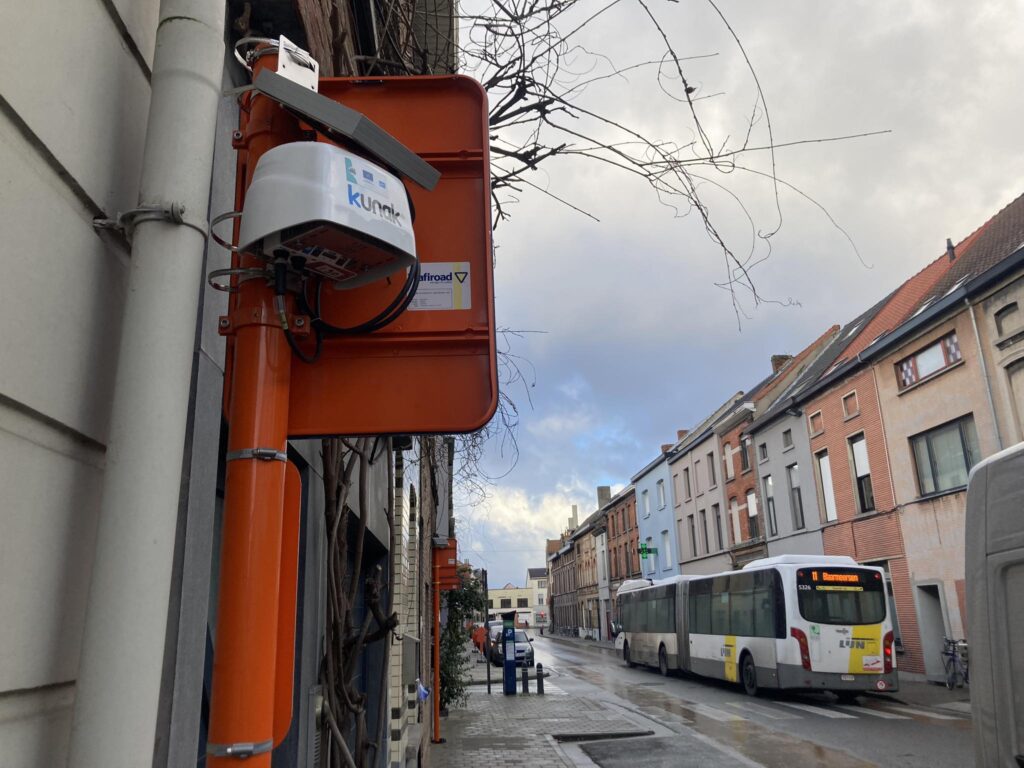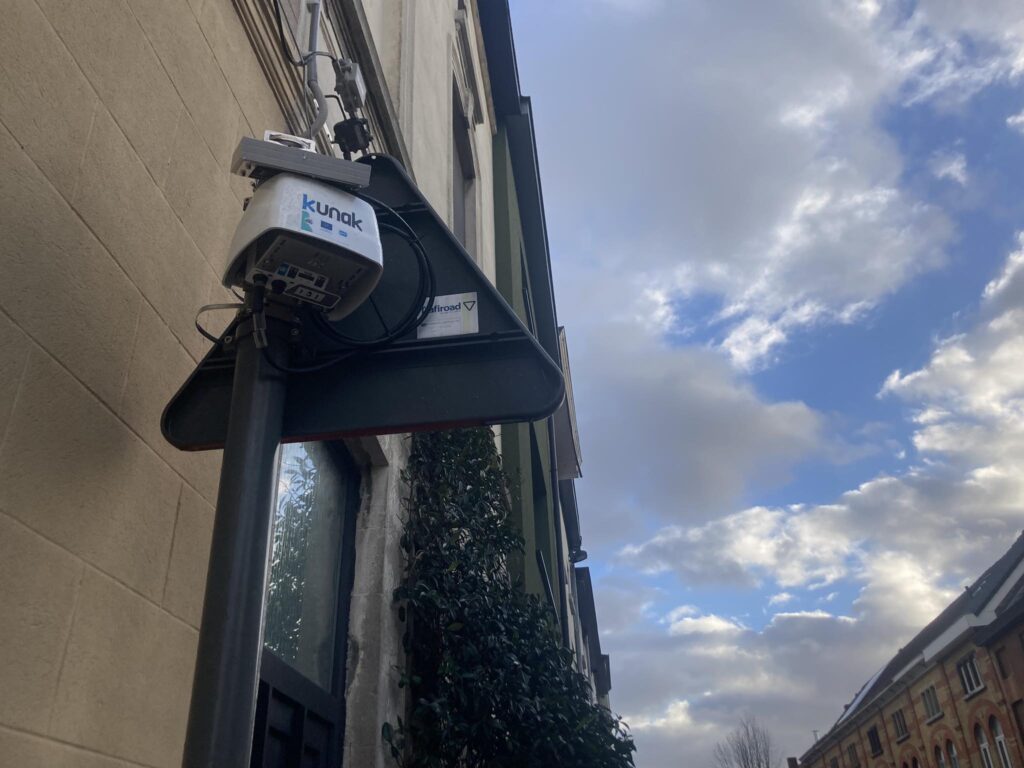Pilot project in Ghent: the city takes concrete steps to enhance the air quality by implementing oxygen districts and evaluating school streets and circulation plans
The city of Ghent rolls out different initiatives with a focus on school streets and mobility plans. The city measures the impact of school streets on the local air quality and investigates how circulation plans can be implemented. Different sensors are put to use to measure the concentration of nitrogen dioxide. The main objectives are:
1
Evaluation of different mobility plans for residential areas
2
Building support for the use of school streets
3
Enhancement of the monitoring of air quality in mobility plans

©Stad Gent
Measuring air quality in real-time
Until 2026, sensor boxes at various locations in Ghent will measure the air quality in real-time. The measurement results will be made directly accessible via an online platform, which the city will use to further investigate whether real-time sensor measurements are useful for evaluating policy measures. Through a targeted approach, air quality in the city can thus be effectively monitored. In addition, the project also contributes to the scientific knowledge about air quality sensors and their application in policy-making.
Where do you find the sensors?
The sensors will perform measurements in the districts of Dampoort, the Muide and around Dok Noord/Tolhuislaan to map the impact of the opening of the Verapazbrug. From September 2024, measurements will also take place near a Ghent elementary school to measure the local impact of the implementation of a school street on air quality. The data will be shown live at the school gate. The experiment investigates whether measuring and visualising air quality has an impact on the behaviour of both students and their parents in choosing the means of transportation to and from school.

©Stad Gent
